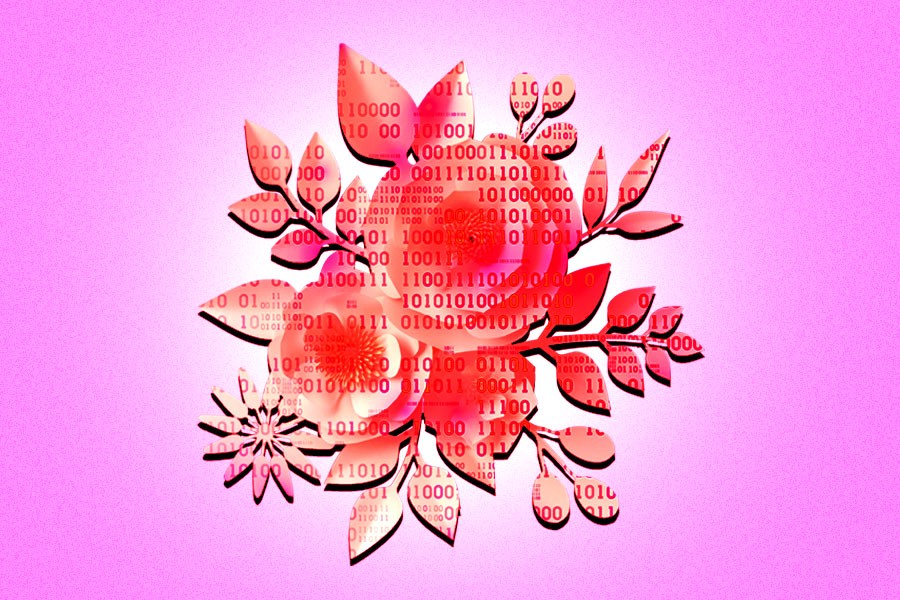These days, more often than not, a bouquet of flowers means only one thing: “Sorry, I fucked up. (Also I really don’t understand exactly what I fucked up but it was clearly something so here are some flowers. We’re good now, right?)”
Occasionally, they also mean, “I love you (look, here’s proof).”
But during the Victorian Era, different flowers could mean very different things, right down to the specific colors within the bouquet. The concept is called floriography — the language of flowers — and it was, in many ways, the precursor to current messaging platforms. Not in the sense that it provided instantaneous all-hours contact, but rather that, like a “U up?” text, it could convey completely different meanings depending on the context (in the case of that text, for example, what time of day and to whom you send it).
Despite its strong associations with the era — and in news that will surprise not a single person with the faintest grasp of Britain’s colonial past — floriography didn’t actually originate in Victorian England. As per this blog post on smelltheroses.com:
“The craze for the Victorian flower language finds its roots in Ottoman Turkey, in particular in Turkish ‘selam.’ This tradition originated in Turkish harems as a game, selam was a ‘language’ which was supposed to be decoded by attaching rhyming words to particular flowers and other objects.”
So how did this “secret language” make its way to England?
“The long-lasting floriography fad was set off by Lady Mary Wortley Montagu, a feminist poet married to the English ambassador to Turkey,” wrote Romie Stott for Atlas Obscura in 2016. “Letters she wrote home from Constantinople in 1717 and 1718 … included an enthusiastic description of the Turkish selam (“hello”) — a secret flower language used by clever harem women to communicate under the noses of their guards.”
While selam wasn’t exactly the basis of a secret language, it fired Montagu’s imagination enough to start a trend amongst the British aristocracy. According to Abigail Chandler, writing for Metro UK, the first flower language dictionary was published by the French in 1819, and shortly after — as per the Atlas Obscura article above — the fad had made its way to the U.S., where, “Between 1827 and 1923, there were at least 98 different flower dictionaries in circulation in the United States, and flower code was regularly discussed in magazines like Harper’s and The Atlantic,” writes Stott.
So what happened to this mysterious, albeit romantic language that utilized types of flowers as a way to communicate? Simply: World War I. The production of flowers became a secondary concern to producing food and munitions, and the fad rapidly died out.
Luckily for us, several floriography dictionaries still exist, so please allow me to shower you with some parsley (useful knowledge) on the practice. Use it wisely, my friends.

The Flower: Dill
The Literal Meaning: Lust
The Modern Equivalent: A ‘DTF?’ text at 2 a.m.
The Flower: Gooseberry
The Literal Meaning: Anticipation
The Modern Equivalent: A “Cant wait 2 c u” text, followed by ?
The Flower: Fleur de li or a thornless rose
The Literal Meaning: Fire
The Modern Equivalent: When your friend roasts another friend so mercilessly in the group chat, all you can do is hit ?
The Flower: Purple Lilac
The Literal Meaning: Escalation of love
The Modern Equivalent: ????
The Flower: Yellow roses
The Literal Meaning: Decrease in love
The Modern Equivalent: Texting someone “ok” or ‘“sure” five hours after they’ve sent you a long elaborate text about how they want to spend the weekend with you
The Flower: Jonquil flower
The Literal Meaning: Love me
The Modern Equivalent: Sending someone “???” when they take five hours to respond to your text
The Flower: Lemon blossoms
The Literal Meaning: Fidelity in love
The Modern Equivalent: Deleting all your dating apps
The Flower: Straw
The Literal Meaning: Agreement
The Modern Equivalent: ?✅?
The Flower: Mudwort
The Literal Meaning: Tranquility
The Modern Equivalent: Texting your weed dealer at 10 a.m. on a Sunday
The Flower: Dark geranium
The Literal Meaning: Sadness
The Modern Equivalent: ?
The Flowers: Yellow carnations
Their Literal Meaning: Rejection
The Modern Equivalent: “lol nah”
The Flower: French marigold
The Literal Meaning: Jealousy
The Modern Equivalent: “Who the fuck is [insert name of person whose Instagram pictures your S/O has been liking all afternoon]?”
The Flower: Spiked willow herb
The Literal Meaning: Pretension
The Modern Equivalent: Getting hit up by a cuck boi
The Flower: Peony
The Literal Meaning: Shame
The Modern Equivalent: Only getting four likes on an Instagram post

